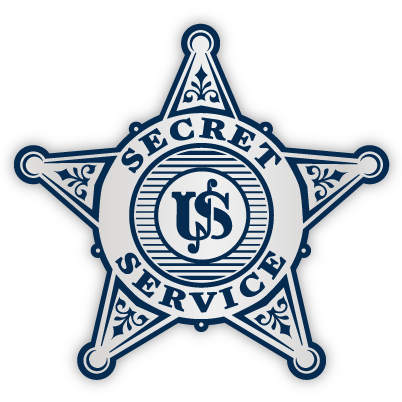This article was originally published in the February 2025 edition of the United States Secret Service Association's official magazine, The Pipeline.
by Kelli Tippett, MFS (USSS Laboratory Director)
This article was originally published in the February 2025 edition of the United States Secret Service Association's official magazine, The Pipeline.
An aperture is an opening in the lens of an optical system such as a microscope, camera, or the human eye that allows light to enter it. Today’s Forensic Services Division (FSD) in the Office of Field Operations (formerly the Office of Investigations) continues to widen its aperture to allow the light of new ideas and state-of-the- art technologies into its scope of capabilities to support the United State Secret Service’s integrated mission of protection and investigations.
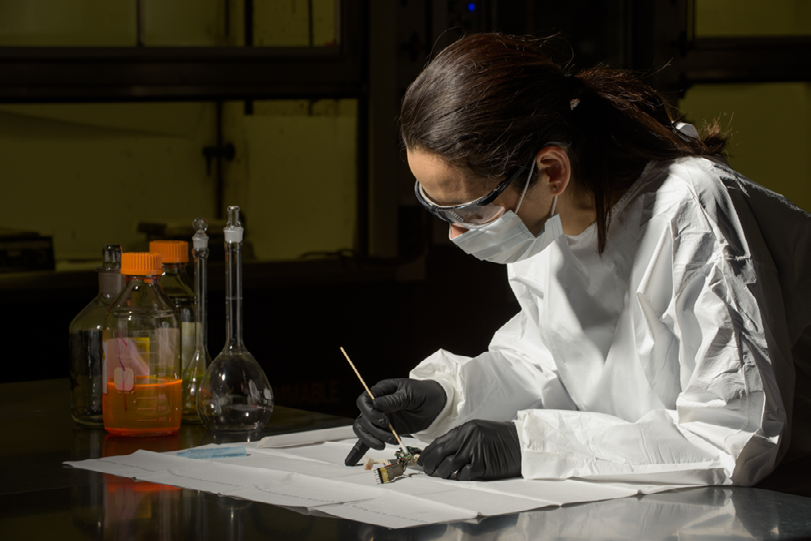
Since my childhood reading Kay Scarpetta crime mysteries and watching America’s Most Wanted, I knew I wanted to combine my interests in science and law enforcement. I embarked on an educational and professional career in forensic science and spent over 12 years as a DNA Analyst and Casework Director at a leading private forensics lab known for its identification of victims of the World Trade Center attack and Hurricane Katrina. While managing a high-throughput property crime team, I had the opportunity to lead an overseas DNA lab supporting the Department of Defense, providing rapid investigative leads on improvised explosive devices, cell phones, etc.
I joined the Secret Service in 2016 as a Supervisory Physical Scientist managing the Quality Assurance, Evidence, & Scientific Services Branch (QAESSB). I was selected to serve as the Acting Laboratory Director before assuming the permanent role in 2018. With my experience at a fast paced, for-profit lab focused on quality, efficiency, and customer service, I quickly determined the FSD Lab, like many other Federal labs, would benefit by modernizing technology and processes, focusing on IT and facility improvements, and leaning into internal and external training and outreach. These operational goals would allow the FSD Lab to recruit and retain talented public servants, to partner with other labs to make the most of limited resources, and to serve as a relevant investigative resource for decades to come.
The foundation of the modern FSD Forensics Lab was formed in January 1965 with the inception of the Identification Section and the Search and Index Section under the Intelligence Division. The Identification Section provided technical support in latent print identification, forensic photography, evidence collection, and crime scene search procedures. The Search and Index Section identified writers of obscene and threatening letters through manual handwriting comparison and “key words” searching. While the organizational structure changed over the years, with the FSD becoming its own division in the early 1980s, the Lab continues to support the Agency’s protective intelligence, crime scene, evidence handling, and investigative operations with cutting edge forensic analyses and research.
Advances in the threat environment and digitization of the financial system required Secret Service forensic techniques to evolve. The FSD Lab now includes enhanced capabilities and streamlined processes designed to increase the volume, velocity, and value of protective intelligence and the investigative information it provides to its customers. Investigations focus on threatening documents related to protective intelligence cases, financial fraud and forgery, false identification instruments, and evidence related to missing or exploited children. The FSD Lab works closely with the Protective Intelligence Division, the Uniformed Division Crime Scene Unit, White House Mail Screening, and over 150 field offices to provide rapid and seamless forensic support and training.
The success of any Secret Service program, particularly one as vital as the Forensics Lab, hinges on the expertise of its dedicated public servants. Each discipline brings a unique set of skills, perspectives, and experiences to drive innovation and technology advancements. Like technological changes since 1965, the Lab’s demographics represent a diverse group of talent including female scientists in senior leadership positions reflective of the current forensics field at large. The FSD Lab is fortunate to have such a highly specialized and passionate group of professionals, who are sought after guest speakers at technical conferences and trainings. Our personnel also serve as recruiters of the next generation of forensic scientists and law enforcement experts.
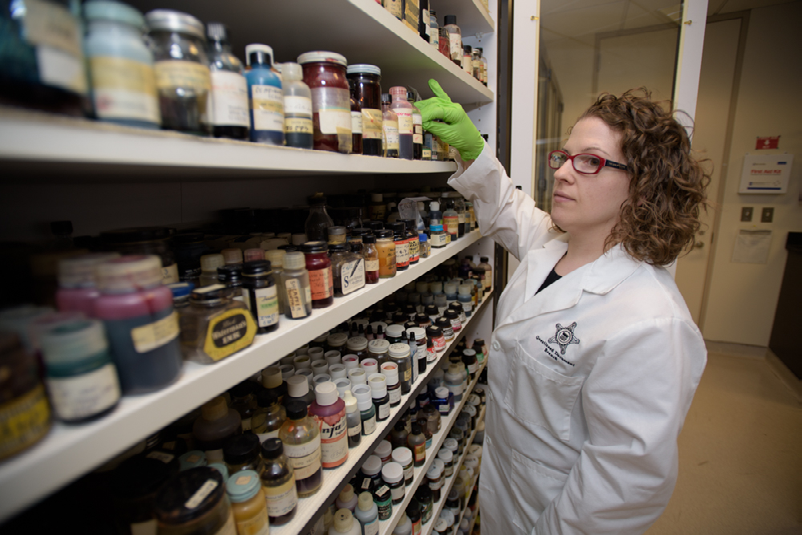
The FSD Lab also steadily implemented innovative software tools, such as a Laboratory Information Management System (LIMS) and digital latent print and questioned document workflows, to improve evidence tracking, digitize case documentation, and decrease turnaround time of deliverables. Gone are the days of manually entering case numbers and logging evidence items by hand. LIMS provides electronic barcode tracking of all evidence items from receipt in FSD through lab testing and evidence disposition. The customer receives real-time case updates and forensic reports automatically through the system, eliminating the paper case file. In the digital latent print and questioned document workflows, examiners document their lab results and conclusions, review case notes, and store digital images of evidence without a single piece of paper. Implementation of these software tools allowed the FSD Lab to pivot quickly during the COVID-19 pandemic to maintain forensic operations in a hybrid environment.
The Questioned Document Branch (QDB) determines the authenticity of documents using conventional and chemical means. The QDB provides analysis and comparison of handwriting, hand printing, typewriting, and computer printing as well as chemical analysis of inks, toner, paper, and other media. With the increase in counterfeit identification documents, FSD Lab examiners developed the automated Thermal Ribbon Analysis Platform (TRAP) that significantly improved the efficiency of financial document examinations. The FSD Lab utilizes the unique Forensic Information System for Handwriting (FISH) database to aid protective intelligence investigations through the association of handwritten threat letters and envelopes, replacing the labor-intensive, manual searching performed by the original Search and Index Section. The future of FISH includes evaluation of Artificial Intelligence (AI) to improve search algorithms to rapidly identify threats to protectees and other government officials.
The QDB may be best known for its Secret Service International Ink Library, the largest collection of writing inks in the world, which currently holds over 15,000 globally sourced ink samples dating back to the early 1900s. External law enforcement and academic partners frequently request FSD’s expertise using this unique database to aid investigations and progress research, respectively. Today, FSD Lab researchers are evaluating advanced chemistry techniques and instrumentation to expand the volume of information available during materials analysis examinations including ink, paper, and toner-printed evidence as well as the emerging threat posed by privately made firearms or “ghost guns.”
The Fingerprint Operations Branch (FOB) provides a full range of fingerprint related services using the most up-to-date chemical and physical methods for the development of latent prints. The FOB compares latent fingerprints, palm prints, toe prints and footprints, developed on evidential material such as genuine and counterfeit Federal Reserve Notes, threatening letters, credit card skimming devices, digital images, etc., to known prints and law enforcement databases. FOB examiners put away their magnifying glasses and now employ digital examination tools to enhance and compare latent print minutiae, increasing the conclusion power. In challenging circumstances, such as evidence from a missing child case, FOB examiners employ the Vacuum Metal Deposition (VMD) instrument to develop latent prints in a vacuum environment using silver, gold and zinc. The FSD Lab’s VMD is one of very few employed in U.S. labs as an advanced capability of last resort.
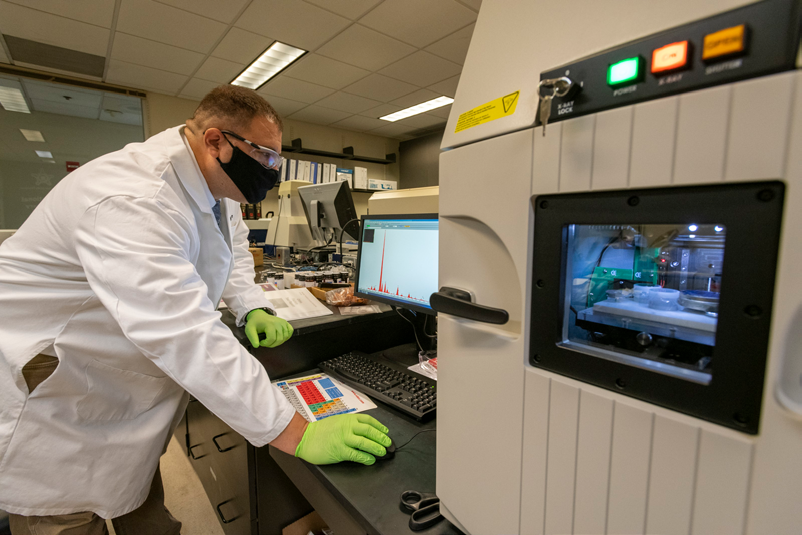
One case exemplifies the Lab’s rapid response in protective intelligence investigations. In September 2024, the Lab received a series of eight threat cases related to the on-going Presidential campaign. The evidence consisted of 70 items including envelopes, copy paper, and toilet paper containing threats targeting President Biden and Vice President Harris. Due to the priority nature of the case, document analysts and fingerprint specialists conducted indented impression analysis, handwriting comparisons in FISH, and latent print processing within 48 hours. Latent prints were developed, searched in national law enforcement databases with no hits, and registered for continuous comparison as new subjects enter the system. By mid-January 2025, FSD received automated notification of database hits on the registered prints. Within 24 hours, fingerprint specialists compared the latent prints to the subject and notified the submitting USSS agents for further investigation.
The Quality Assurance, Evidence, & Scientific Services Branch (QAESSB), consisting of physical scientists, evidence specialists and student interns, oversees the Lab’s international quality accreditation, provides novel and operational research support, and manages the enterprise evidence program for all field operations. The QAESSB also includes a recently created Forensic Intelligence Program (FOR-INT), which connects traditional forensic results with intelligence data to identify links, patterns, and trends pertinent to criminal activity to advance investigations. Analysis of these data produces actionable intelligence for disrupting and preventing crime.
It can be said that progress is truly part of the FSD Lab’s DNA. In 2018, in collaboration with internal and external agency partners, the FSD Lab embarked on the implementation of routine DNA testing capabilities to enhance the exponential increase of access device “skimming” and other investigations. All Lab examiners were cross trained in DNA collection, and the collected DNA swabs are outsourced to partner labs for DNA testing and database searching. Since program inception, examiners collected over 2,500 DNA swabs – 70 percent resulting in a usable DNA profile and identifying 144 offenders. QAESSB research scientists piloted a Rapid DNA system capable of performing 90-minute DNA tests from mock evidence encountered in Secret Service casework. Rapid DNA technology complements the traditional DNA lab test and is the latest innovation to enhance arrestee booking stations with DNA and fingerprint enrollment in law enforcement biometric databases. The FSD Lab is tracking these developments, along with other technology advancements, for the future of forensics to support law enforcement.
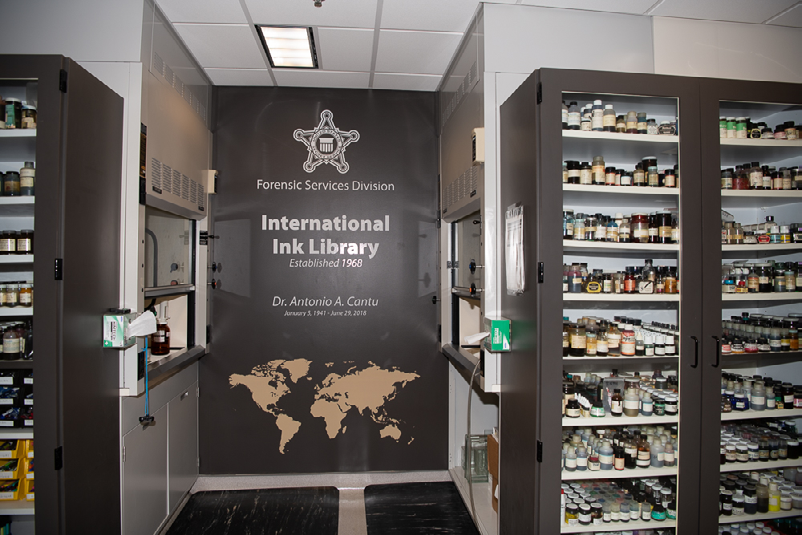
One case highlighting the Lab’s support in financial crimes investigations involved partnership at the local, state, and Federal levels. In January 2023, USSS and Internal Revenue Service agents identified and charged eight defendants in the case known as “Operation Pump and Dump”. The co-conspirators broke into gas pumps throughout Southern California and installed customized skimming devices to steal victims’ credit/debit card information during otherwise legitimate transactions.
The defendants made unauthorized cards encoded with victims’ information for their own use, stole victims’ funds, or otherwise sold victim financial information outright to others who would exploit it for their own gain. The FSD lab analyzed over 125 skimmers for latent prints and DNA. The FOR-INT team leveraged the forensic results to create visual data analytics charts to aid investigators and prosecutors in associating the forensic hits across multiple cases, subjects, and jurisdictions. One defendant, a Los Angeles resident, was sentenced to 41 months in prison for building skimmers and admitted to stealing at least $619,923. Another defendant in a related case received a prison sentence of 12 months + 1 day.
The Secret Service devotes its entire suite of forensic and investigative tools to the investigation of missing or exploited children in support of the 30-year partnership with the National Center for Missing and Exploited Children (NCMEC). This support includes polygraph examinations, age progression/regression, composite sketches, audio/image/video enhancement, speaker identification/recognition, questioned document analysis, latent print development and examination, geospatial information mapping system, and digital forensics. In 2023, NCMEC reported a more than 300 percent increase in child exploitation and abuse cases, highlighting the harsh reality that child exploitation crimes continue to grow in scale and complexity due to the expansion of digital technology. The FSD examiners employ their expertise to rapidly analyze evidence and provide invaluable investigative support in identifying and convicting child predators.
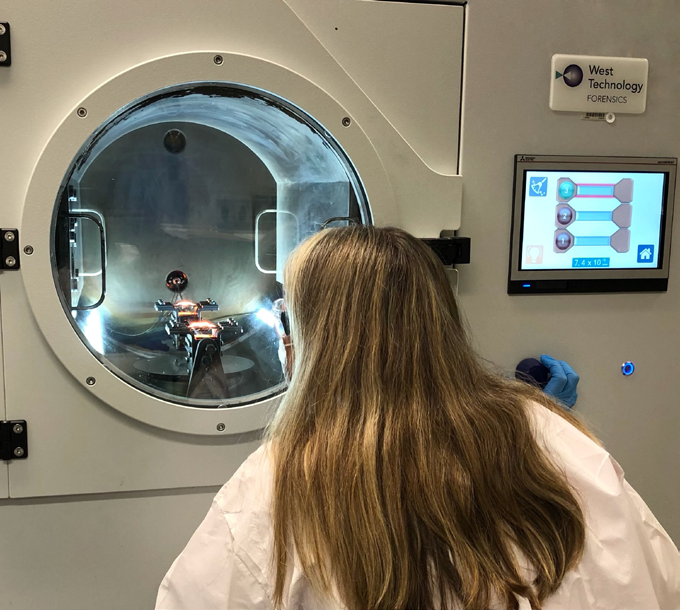
Looking through the future lens of the Secret Service FSD Lab, modernization of lab facilities is needed to accommodate expanded capabilities, instrumentation, and personnel to anticipate changes in the threat, investigations, and intelligence landscape and to respond to the needs of the agency and our partners. A purpose- built lab facility is desired to consolidate the entire portfolio of forensic science and research activities including digital forensics, crime scene search, and evolving forensic disciplines.
AI and other software tools are required to further streamline workflows and maximize examiner bandwidth as the volume and complexity of protection threats and financial crimes investigations grow. With the help of brilliant and dedicated team members and agency leaders, I am proud of the accomplishments we achieved in the last eight years, keeping an eye to the future. The FSD Lab and its expert workforce are well positioned to continue widening the aperture of novel ideas and advancing technologies to meet the Secret Service’s forensic demands for the next 50 years.

